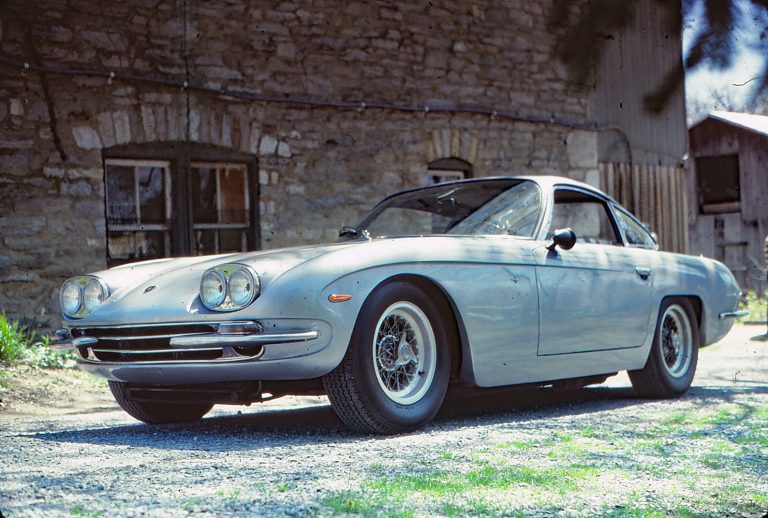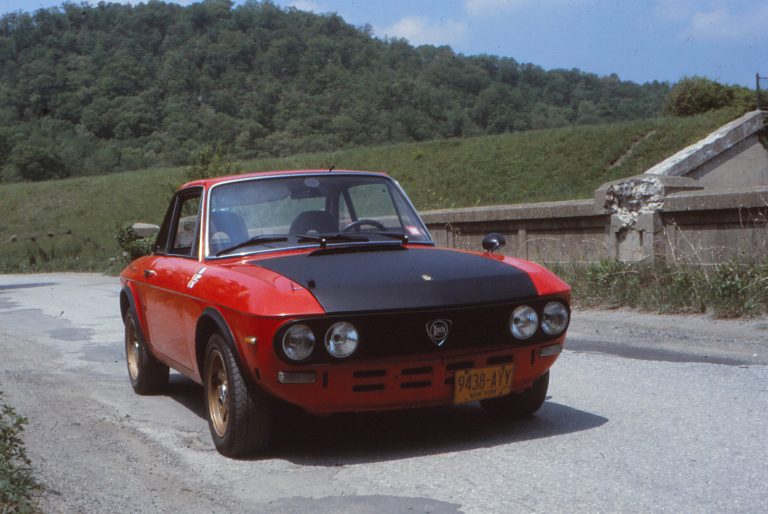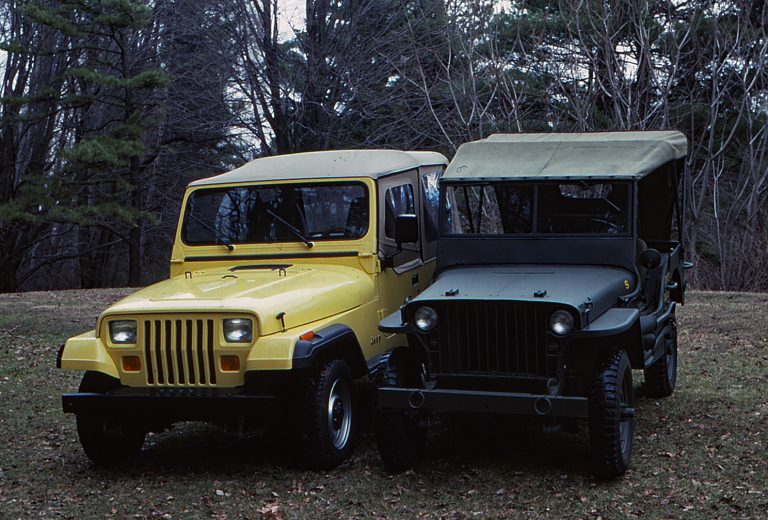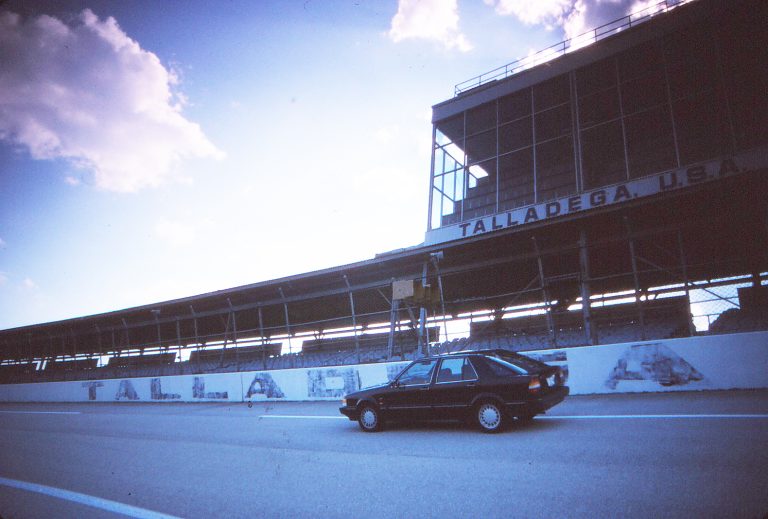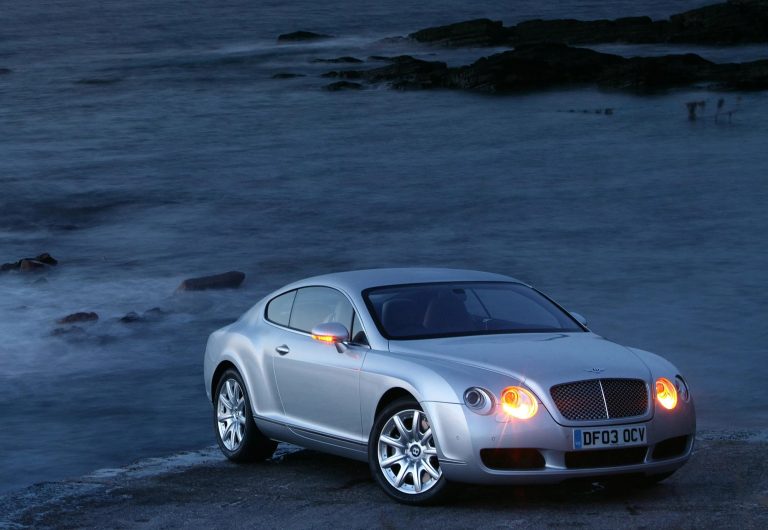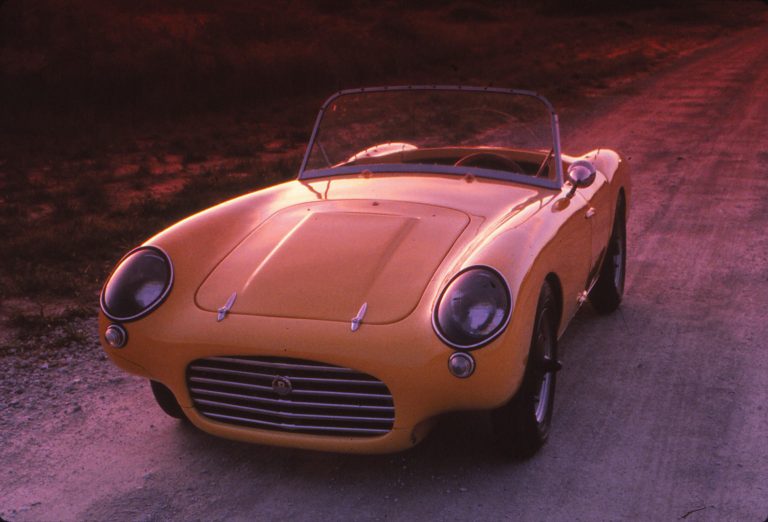History and buyer’s guide originally published in European Car in August 1993; republished by the author
“What’s it like to own a $10,000 car?” Volvo asked the question in a magazine ad and answered it with “Find out for $3995” and a picture of the P1800 (along with a $12,500 for a Ferrari, a similarly priced Aston Martin, a $12,990 Facel Vega and others). Another Volvo ad called it “either the most expensive economy car in the world, or the least expensive Gran Turismo car in the world.”
Whatever it was, it was something new for Volvo. Other than one brief and misplaced flirtation, it was Volvo’s first affair with the sports car. It was an immediate hit. Car and Driver said, “From its attractive egg-crate grille to its kick-up rear fenders, it looks trim and fast…” Road & Track, in noting its debut at the Brussels Auto Salon of January 1960, called it simply a “very pretty car.”
It was not merely an aesthetic success. When production began in May 1961, it would be the start of a 12 year reign that would see 47,462 sporting Swedes built. Yet for as much that remained the same over the years, little of the last 1800 that rolled off the production line at 2 pm on June 27, 1973. It was built in Sweden, the engine was bigger, fuel injected, and (for the U. S.) smog controlled, an automatic transmission was available, and only a “sportwagon” version was available. Even the name had change: 1800 ES.
When it began it was the P1800, and in truth it wasn’t even built by Volvo. Lacking production capacity, the Gothenburg-based firm contracted Jensen Motors near Birmingham, England, to finish assembly of the sportster. The body panels were stamped and assembled by the Pressed Steel Company in Scotland, and components were gathered from all over the industrialized world. Smiths instruments, Lucas electrics and SU carburetors from England, ZF steering gear and Bosch ignition from Germany, and Spicer rear axle, Delco shocks, Autolite wiper motors and fuel pumps from AC, all in the U. S. The Pirelli tires were from Italy.
Yet it was still very much a Volvo. The engine was exclusive to the P1800, and at an even 100 bhp was the most powerful Volvo yet. But it was still a 1780cc pushrod inline 4, and with five main bearings as big as a Chevy V8’s and crankshaft and connecting rods to match, the engine was sturdy as a moose but unfortunately had about as much humor. Road & Track felt the car was “designed for tractability, rather than racing.” Yet with a four-speed manual (plus overdrive), a 4.46:1 final drive, and 2500 lb of sturdy Swedish deal to push about, the P1800 turned 0 to 60 mph in 12.4 sec and Rand the quarter-mile in 18.0 second at 72 mph. Not exciting today, and even then Road & Track noted that a “great many cars less imposing in appearance and less expensive to buy will hand (it) a terrible drubbing in a contest of speed.”
However, the P1800 was highly rated for comfort, an ability to run at high speed all day and good, if not great, handling. As a sports car the P1800 could be upstaged. But as a grand tourer, it was an excellent compromise: exotic ambience at a much less than exotic price. (Still, at almost double the price of, say, Volvo’s 544, the P1800 was far from cheap).
The first 6000 cars, call the A series, were produced in England, with assembly transferred to Sweden in the spring of 1963. The next 2000 cars were the B series, adopting the 1800S moniker for public consumption. These cars were largely unchanged from the first series, the biggest change was the use of smaller hubcaps from the 122. Significant alterations awaited the D series (there was no C series). Eight more horsepower were added to the engines output and interior changes were made. Ironically, the first 8000 cars, mostly made in England, were the only cars of the 1800 series to have a Swedish-flag-and-crown Volvo badge on the C pillar. It was dropped with the advent of the D series.
The E-series began in August 1964, easily recognized by a cheaper stamped grill and a straight bumper instead of the previous “bull’s horns” design. Both front and rear bumpers got full-with rub strips. A new exhaust manifold distinguished the F-series beginning in August 1965 and bumped the engine output to 115 bhp.
The M-series began in August 1966, Volvo again skipping letters in the alphabet and again changing the grille, its doubled horizontal bars matching the design used on the 122. From the side, the chrome trim strip that had followed the character line on the side of the car was straightened. For $299 and the cost of installation (about $100), a tuning kit was available from your friendly Volvo dealer, increasing power to 135 bhp with a high compression (11.0:1) head with bigger valves, a high-lift camshaft, exhaust header and other changes.
New U.S. safety regulations inspired changes in the P series starting in August 1967, including a collapsible steering column for all markets and, for the American market, front seat headrest and safety knobs. Other changes included a new three-spoke steering wheel and a repositioned choke knob.
The first effects of emissions controls appeared in 1968. The engine was bored out to 1986cc but power rose a measly three horses. The culprit was a lower 9.5:1 compression ratio. U.S.-bound cars received Zenith-Stromberg carburetors instead of the SU carbs. Other changes to the B 20 B engine included a cooling fan clutch that limited fan speed to about 3000 rpm, reducing noise, and air cleaners that reduced carburetor noise. An oil-to-water oil cooler was dropped, believed not necessary with a larger oil pump and improved oil. The clutch and final drive ratio (4.30:1) were also changed. These S Series cars, which started production in August 1968, didn’t get a name change to reflect the larger engine, just a “B20” on the grill. It was the last 1800 S.
They also picked up speed. A 10.5:1 compression ratio, bigger intake valves and a hotter cam raised power to 130 bhp, and just in case that was too much, four-wheel disc brakes replaced the earlier disc-drum system. The Volvo four-plus-overdrive transmission was replaced by a ZF unit.
The Volvo transmission, strengthened to handle the hotter engines torque, replaced the ZF in the U Series 1800E commencing August 1970. At the same time, Borg Warner’s ubiquitous BW35 three-speed became the first automatic available in the 1800 series.
The final year for the 1800E began in August 1971. The grill was changed to black ABS plastic with vertical slats, and a new rectangular hood ornament appeared, but gone were 5 hp for the U. S. market cars. The rest of the world got five forces more, a universal trend that would continue for the next decade or so.
Flagging sales may have brought the demise of the 1800 coupe, but a clever redesign was able to salvage a few more years out of a shape that had grown stale. Volvo chief designer Jan Wilsgaard updated the 1800’s obsolescent rear end with a miniwagon roofline. The new model, which coincided with the appearance of the W series 1800E, was the 1800ES. A frameless glass hatch provided access to the rear storage area greatly increasing the 1800’s luggage capacity (though Car and Driver called it too small even “for two consenting adults”) and, in truth, recasting the vehicles market positioning. An ad showing an 1800ES with scuba equipment personified the ES customer, someone with an active lifestyle and stuff to go with it, but someone not willing to drive a boring car. The W series ES was equipped like its coupe counterpart, and was produced through July 19, 1972.
The final year of the 1800 series began in August 1972 as the Y series 1800ES rolled off the production line, marred by bigger impact-absorbing bumpers and engine reduced to 112 bhp and a lead-free diet. Other modifications included side-door guard beams and a lower first gear.
Though sales of the 1800ES were strong until the end, impending federal crash safety regulations would have required a structural redesign and with safety and emissions rules threatening sales of its bread-and-butter sedans in United States, not to mention the impact of the OPEC oil embargo and a worldwide recession, Volvo decided to end the production of the 1800 ES. It was a luxury the small Swedish company couldn’t afford.
The 1800 series remains remarkably affordable to the collector today, however. While Ferraris and the other exotics against which Volvo compared the 1800 had prices go to the ceiling (and come back down into the attic or even second floor), the 1800 series Volvo has stayed right in Middle America’s living room. A perfectly restored 1800 of any vintage should sell for less than $20,000 (most drivers will go for less than half of that), and fixer-uppers even less still.
The 1800 was made in relatively large numbers for a sports/grand touring car, and the mechanicals are downright rugged. As a result, the 1800 is relatively common and buyers would usually have a choice. While Hemmings and Old Cars and other collector-oriented classifieds are good sources, Volvo’s GT shows up in local newspaper classified ad sections as well and can be bargains. Clubs are also an excellent source of cars, either via networking or newsletter classifieds. And these cars are more likely to have a “history” and less of a risk than those on the general market. The availability of 1800s mean that it’s somewhat a buyers market out there. It isn’t necessary to buy just any rusty hulk for fear of missing out on the 1800 experience. The wise 1800 buyer will seek the middle ground between the expensively over restored car – for which the owner will undoubtedly hope to recoup his expenses (from you) – and the rust bucket or basket case, of which the former may not be all there in the latter may need to extensive (and expensive) body repairs to be economically reasonable.
It’s best to find a sound chassis that hasn’t been attacked by rust. The 1800 has a reputation for being rust prone; loyalists deny the accusations. The reason so many rusty 1800s can be found is because the drivetrain holds up so well; other marques would have as many rusty examples, but they’ve expired for mechanical ailments. That said, the P1800s assembled by Jensen are more likely to be rusty then later cars, first because they’re older, and second because Jensen didn’t do a very good job of putting them together (that’s why assembly was moved) and they leaked.
Another place to look for rust, particularly on those cars with the fuel filler located on the rear deck is in the fuel tank. The drain line under the fuel filler door gets plugged in rainwater leaks by the hardened and cracked filler cap seal. Voila, a rusty tank. Lift the mat over the tank and look for blisters.
Another rust area is the rocker panel. There should be a vertical seam at either end. If it’s smoothed over it’s possible that rust repair has been done. Another seam that should be there is under the headlamps; a smooth surface suggests a rust or collision repair. Patch panels are available for 1800s, but the less rust repair you have to do the better.
The headlamp buckets, incidentally, are interchangeable with many British cars that used Lucas electrics. If you can’t find a Volvo part, check your Brit stockist. All-red tail lamps were used in the U.S. until the ES, when red and amber lenses were introduced. Only the bicolor lenses are readily available now, but that’s important only for concours competitors.
Noises from the rear suspension probably indicate the need to replace the rubber doughnuts that tend to wear out. These can be replaced with original parts or longer lasting substitutes made from polyurethane and available from iPd.
The P series cars were the first to have dual circuit braking systems and had master cylinders made by Wagner. They’re no longer available, but the master cylinders can be honed and sleeved if originality is important; or there are kits to adapt the later ATE master cylinders.
Gauges on the early cars tend to have problems, particularly with the oil and coolant temperature gauges. These are actually thermometers that read temperatures via capillary tubes, which are easily damaged by ham-handed mechanics. Repair parts are available from Volvo specialists.
The 1800E and 1800 ES, equipped with the Bosch D-Jetronic fuel injection, generally run better than their carbureted cousins but can be subject to elusive electronic gremlins. One of the more common problems is the wiring becoming brittle with age, breaking or shorting, particularly along the firewall behind the engine where it’s exposed to heat and other environmental nasties. Replacement looms are no longer available, so repairing the system means shopping the salvage yards (which may have wires only as brittle as yours) or replacing the individual wires. The latter option is complicated by the wires being tagged for identification only at the ends. Fortunately, the sensors and connectors are still available from Volvo.
An oddity of the T Series 1800E was the absence of a “thermal timer” on its fuel-injection system; enrichment occurs only during cranking. There was otherwise no choke effect. Another anomaly of the T Series system was injector shut off on closed throttle. There’s no fuel until rpm drops to about 1200. It feels odd, but there’s no adverse effect and that’s the way it’s supposed to be.
Generally parts are available for the 1800 series, many from your local Volvo dealer or parts store, or from a surprising number of Volvo specialists. Parts interchangeability with other models, particularly the 120 series, helps with availability. Even performance parts are available; iPd is the source for everything from cam shafts to carburetors to anti-roll bars for Volvos from 444 on up. You should be able to find something to fit in 1800.
There is an active network of Volvo collectors with three primary clubs in the United States and many more worldwide. The three U.S. clubs are the Volvo Club of America, the Volvo Sports America 1800 club and the Washington Volvo Club. Of these, the second is specifically oriented to the 1800 series cars, and the Washington Volvo club, though based in the District of Columbia area, is in reality an international club because the clubs have overlapping memberships, a joint national meet was initiated in 1991, replacing three separate national meets. North of the border Volvistas (and others) can join the Ontario-based Volvo Owners Club, eh.
Be forewarned, however, that Volvo owners drive their cars. You won’t see many trailer queens at Volvo meets, Volvo owners preferring to drive to meets. Volvos have six digits on their odometers (not counting tenths) and Volvo owners like to try to fill them up. A high mileage car – especially in good condition – gets more respect at a Volvo meet than one showing low miles. That goes for 1800s too.
The Volvo 1800 still isn’t a Ferrari or Aston Martin, but it has styling that remains handsome and, compared to the exotics, the Swedish GT is even more a bargain today than it was new.
Addendum: This buyer’s guide was written and pubished in 1993, more than 40 years ago, as this is written. Although thre basic information hasn’t changed, availability of new-old stock parts will be diminished. Over the past five years, the average auction price for a Volvo 1800S has been stable at about $30,000. The highest tracked by classic.com was a 1963 1800S which sold for $110,000. The average auction price for 1800ES tracke by classic.com , on the other hand, is significantly lower, at $22,000. Although this may represent the quality of car being offered, it also represents 88 sales over the past five years. The highest 1800ES was a 19721800ES which went for $70,000.










